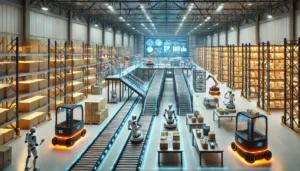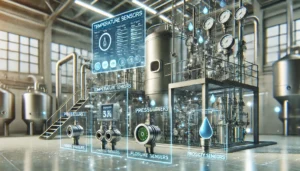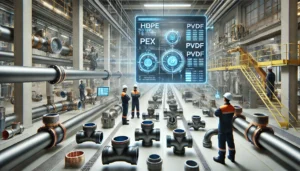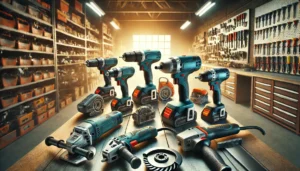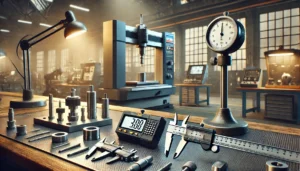The combination of smart equipment and artificial intelligence (AI) is changing industrial safety for the better by enabling a shift from reactive strategies to proactive strategies as well as real time hazard management. With the help of modern technologies safety can now be predicted, mitigated, monitored, and even avoided entirely.
AI-Powered Personal Protective Equipment (PPE) Detection
Keeping the workplace safe starts first with ensuring that PPE is compliant with workplace protocols. AI systems utilize deep learning techniques that identify rule violations such as not wearing the required personal safety equipment. By merely looking through the video feeds these systems determine the presence of headgears, gloves, safety vests, and other protective implements. Infractions will be reported to supervisors as soon as they are observed via this deep machine learning technique. This machine learning approach automatically adds a layer of safety when everyone on the ground follows other regulations which prevents injuries.
Active Risk Management with AI and IoT
The AI boom as well as the IoT boom in workplace safety helps with predicting analytics, active monitoring, and proactive risk management. Information from predictors such as sensors within machinery and wearable devices enable the AI systems to pinpoint and understand specific patterns, allowing them to alert the users to the dangers before they materialize. Such a system allows for much needed interventions timeously when it is needed the most, increasing safety measures, and cutting down accidents.
Detection of Unsafe Behaviors
Compared to conventional oversight, AI systems can detect unsafe actions that might otherwise be missed. For example, AI can recognize behaviors such as not using the handrails, improper ladder usage, or even running within the work environment. These behaviors can subsequently be addressed in real-time before they become problematic and are reinforced over time. In the construction industry, vision systems integrated with AI observe worker activity on the scaffolds and will issue alarms whenever a worker climbs aboard without a harness, thereby avoiding further escalation.
Improved surveillance using AI-powered wearable devices
AI-powered devices, or wearables, are changing how worker safety and health monitoring is done. These devices are capable of measuring one’s vital signs, monitoring their surrounding environment, and notifying the worker of possible imminent danger. For instance, AI can use the data from IoT sensors to monitor and audit individual workers that ensure they are complying with safety regulations, particularly avoiding potential legal risks, and building an environment that advocates compliance. This extends into monitoring the worker’s position, measuring vital signals, remote workers, thereby eliminating the chances of inflicting physical injuries, and improving staff training.
Improving PPE Design with Ai
With the help of artificial intelligence, the design of personal protective equipment has the potential to evolve to a level where enhanced performance, increased functionality, and better fitting designs can be achieved. With the analysis of a large volume of data gathered from anatomical measurements and mobility patterns, AI can help create an effective and comfortable PPE. PPE that is comfortable will lead to more compliance from workers which will subsequently lower the injury rates.
AI in Maintenance Protocols
There is a need for the industrial space to be equipped with AI tools that can make maintenance processes automated. These advancements, such as AI enhanced smart wearables, provide an extra layer of protection for workers in hazardous places. Predicting equipment malfunctions, scheduling maintenance checks, and operating machinery within safe parameters are some of the processes these tools are capable of doing while averting accidents caused by equipment failure.
Robotic Exoskeletons to Prevent injuries
AI powered robotic exoskeletons are aimed to prevent musculoskeletal injuries for people who are required to do heavy lifting during their jobs. These devices facilitate and enhance human movement to lower the burden placed on the workers and reduce the chances of injury. By augmenting human capabilities, exoskeletons contribute to a safer and more efficient workplace.
Fatigue Monitoring & Fall Detection
Monitoring fatigue level and fall detection are significant functionalities of AI in construction safety. Ensuring fatigue or drowsiness does not occur is of the utmost importance to employees who work on risky pieces of machinery or conveyance vehicles. Facial emotion analysis is one such example where an AI can identify the type of expression an employee has, then call for a break. Construction zones also employ software that manages fall detection, swiftly acting on the event to assure that the worker gets aid right away and injuries sustained are minor.
Drones for Site Inspections
The use of AI-enabled drones for site inspection of construction sites that are difficult to approach is on the rise. They can scan and evaluate the construction site and other facilities to conduct remotely without putting an employee in danger. Such drones are fitted with AI that allows them to locate safety risks, construction damages, and other items needing attention which will enable for prevention of issues through maintenance.
Predictive Analytics for Hazard Detection
Using AI driven predictive analytics can determine potential risks over a period of time due to risk data collection through, but not limited to CCTV, wearable devices and IoT gadgets. The collected data is then evaluated by AI to identify any hazards that could happen and give insight on how to prevent them from happening. This approach allows for safety management to greatly enhance risk submission capabilities.
Conclusion
The smart equipment and AI technologies development promises to revolutionize the future of industrial safety. These technologies provide real time, proactive interventions to detect and neutralize risks, guaranteeing a safe workplace. With continued innovation, the technology will further strengthen workplace safety requirements and procedures through the use of AI and intelligent devices, which will result in much safer and more productive work environments.


